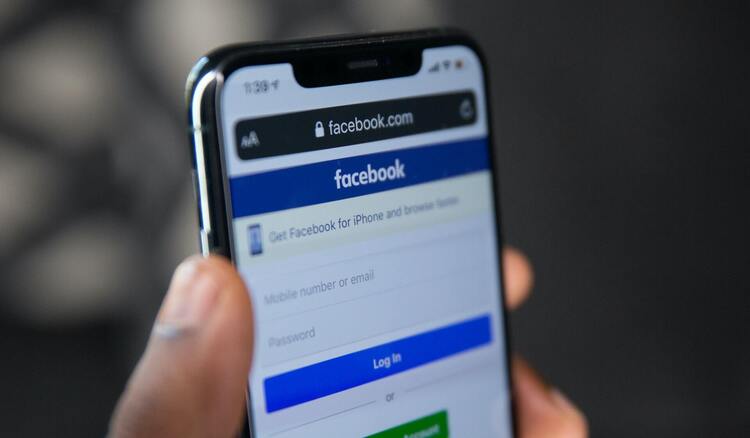It takes a little more effort to get the hang of Facebook Lead Gen Forms, but it’s worth the extra time and effort to dial it in. In this article, we’ll help you develop your own Facebook lead ads best practices and understand:
• A brief history of Facebook Lead Gen Forms
• How to generate leads versus conversion leads
• How to attract higher intent leads
• Images for Facebook Lead Ad
• Facebook Lead Ads Greeting
• Prefill Questions for Facebook Lead Ads
• Privacy Policies for Your Lead AD
• Review Screen for Your Facebook Lead Ad
• Configure your CRM
A BRIEF HISTORY OF FACEBOOK LEAD GEN FORMS
Once upon a time, when Facebook lead ads began way back in 2015, it was all about the number of new leads you acquired. The more leads, the better, right?
Not so fast. It quickly became apparent that this system became a spam lead magnet, and it became difficult to trust lead generation from Facebook lead ads. Quality prospects from your target audience became few and far between.
But now, Facebook lead ads have forms that enable you to attract more high-quality leads that are more likely to convert. You can once again rely on Facebook lead ads if you understand the nuances of lead forms and build strong future campaigns with landing pages that have a clear call to action.
LEADS or CONVERSION LEADS
What’s the difference between leads and conversion leads? The long and short of it is mostly intuitive.
The Leads option optimizes your Facebook lead ads for quantity and gives you the most volume of prospects within your budget. This was the default for Facebook lead ads, but now there’s another option in the lead form, thanks to complaints that people were experiencing high levels of spam and unqualified leads.
The same thing that makes Facebook lead forms so amazing is precisely the same thing that makes it so problematic. Since Facebook users can fill out your form within Facebook without being redirected to a landing page, it removes any barriers preventing potential customers from falling off somewhere in the process.
However, because the Facebook lead ad form keeps users on the Facebook platform, that also exposes you to more spam and unqualified prospects.
So what’s the solution?
HIGHER INTENT LEADS
Conversion leads is a new instant form option that increases the impact of your lead magnets. Now you can signal your lead ad to only bring in qualified new leads from your target audience that are more likely to convert.
When you create lead ads, make sure to toggle the Higher Intent option rather than the More Volume option in the Facebook lead ads form. More volume is the Facebook default. If you’re results-oriented, go with Higher Intent when you fill out your Facebook lead ad form.
IMAGES FOR FACEBOOK LEADS ADS
In the lead form, you’ll have the option to either
Use the image from the ad
or
Use uploaded image
Since you want to remind them what they’re signing up for, select “Use the Image from the ad” for the best results from your Facebook lead ads.
Facebook Lead Ads Greeting
The form will ask you to enter a headline for your greeting. It cannot be more than 60 characters in length.
Then you’ll need to enter a description. This lead form description can be in paragraph or list form. Think of this description as a replacement for a landing page.
You’ll want to develop a powerful, well-thought-out headline, an engaging opening sentence, and a clear call to action. Establish what they’re signing up for and the value of that offer. Give them a compelling reason to fill out the form.
PREFILL QUESTIONS FOR FACEBOOK LEAD ADS
The prefill questions for your Facebook lead ads will include form categories like email, name, and phone number–which will be auto-filled by Facebook. Hooray!
But be careful: users tend to skip over this step, which could leave you with outdated or wrong email addresses. However, phone numbers tend to be more up-to-date and correct.
So, make sure you always add the phone number as a prefill questions category on your form since most people use their mobile devices for security purposes with their account.
This will enable you to use text messaging and manual phone calls for your communication rather than relying on emails that are no longer in use.
Beyond the form categories, make sure you create up to three or four custom questions for your target audience. Custom questions invite people to actually engage with the form. The short answer question is a great place to start.
You want to add a little friction to the process to qualify your leads rather than just making it a simple click for anyone or any bot to waste your time.
These prefill questions are an effective way to pre-qualify your prospective customers. Make them think about why they want to get involved at any level with your company and do a little bit of work to get the relationship rolling.
PRIVACY POLICIES FOR LEAD ADS
Want to focus on text message follow-ups? You’ll need to ensure you have the appropriate privacy policy that gives your business permission to do so. This will require you to add a link to your website.
REVIEW SCREEN FOR A FACEBOOK LEAD AD
This simply allows the user to verify that their email, name, and phone number are correct. If one of those categories is incorrect, they’ll have the opportunity to fix it.
COMPLETION OF YOUR FACEBOOK LEAD ADS
Again, you’ll enter another headline and a description along with a call-to-action button text.
Here’s where businesses typically tend to make mistakes with their lead ad. To get your leads to the next step, make sure your call to action is relevant, clear, and engaging. Get beyond the typical “visit our website” or “learn more.”
Use the headline to hold their hand and make sure they complete the lead ad form for you to truly generate leads. And don’t be afraid to use emojis to lighten the mood and add some personality!
Be transparent about why there’s one more step, but don’t burden them with too many details. It’s that Goldilocks temperature you’re after.
Make sure the link associated with the button is a direct link to one of your landing pages that will help your target audience get in touch with you to learn more.
REVIEW AND EDIT YOUR FACEBOOK LEAD AD
Before you save and publish your Facebook lead ad, review each of the sections to ensure the options are all set for lead gen optimization. Because once you publish the form, you can NOT go back and change it.
You can duplicate your Facebook lead ad, but remember that it will be a separate form, and this is where businesses make a lot of mistakes that prevent the efficacy of the lead ad altogether.
FACEBOOK LEAD AD TRACKING PARAMETERS
Make sure you’re creating tracking parameters so you can see which lead magnets are actually converting.
OPEN OR RESTRICTED FORMS
An open form means anyone can see that form. And restricted forms are only for those who you served an ad to.
Once you publish a form, you’ll see it appear in your Forms Library. If you save it as a draft, it will be in the Draft Forms Library of course.
SET UP NOTIFICATIONS
By default, the forms are not set up to send you notifications. Wah-wah. So, make sure you go to the Leads Setup section, and you’ll find your direct CRM where you can set up automatic notifications. You can also connect it to something like Zapier if you prefer.
Set up the notifications so you receive both an email and text alert immediately.
LEADS ADS EXAMPLES
Now that you know how to set up the forms on Facebook, what kind of paid ads perform the best?
Here are our top 5 favorite Facebook lead ads:
1. NEWSLETTER OPT-IN
This is a really easy and fast way to grow your email list to stay engaged and relevant with all of your prospective and existing clients.
How do you get them to opt-in? Try offering a discount code or host a competition. Hosting a competition is a great way to get people interested if you don’t necessarily want to discount your products.
2. RUN A LIMITED TIME OFFER
A limited-time offer creates a sense of urgency and nudges people to act quickly. You could offer a month or two of free membership if they sign up before a specific date. Or you could offer a discount if they sign up over the weekend.
3. INVITE USERS TO SIGN UP FOR ONLINE COURSES
It’s more than ok to ask users to commit to something more–to something that will require more of their time but will also provide them with a lot of value as they learn new skills and improve their business processes.
Make sure you clearly define what the course is and highlight the benefits they’ll receive from participating in your online course.
4. INCREASE EVENT REGISTRATIONS
Does your business host online webinars or other events? You could offer a discount code for those who sign up early or invite a friend.
Make sure to give a detailed description of the event and the value you’re providing and schedule your ads well enough in advance.
5. COLLECT PRE-LAUNCH LEADS
Launching a new product or service, and want to create some excitement to engage potential customers? Rather than simply telling your audience to “stay tuned,” you can ask them to join your email list, so they’re the first to know when your new product or service has launched and is available. These ads will help you generate excitement and buzz around your new product or service while collecting targeted email addresses.


